Around the diocese

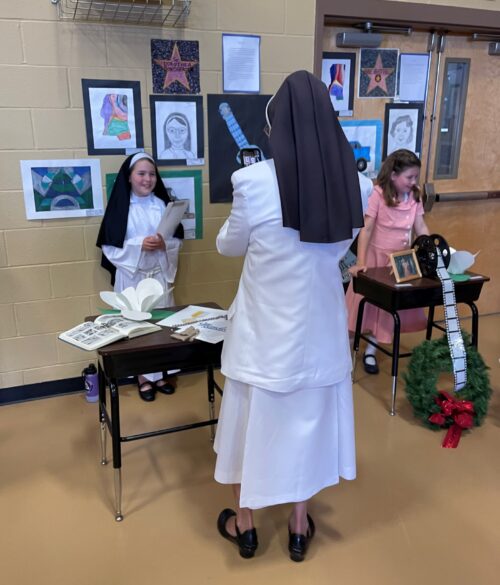

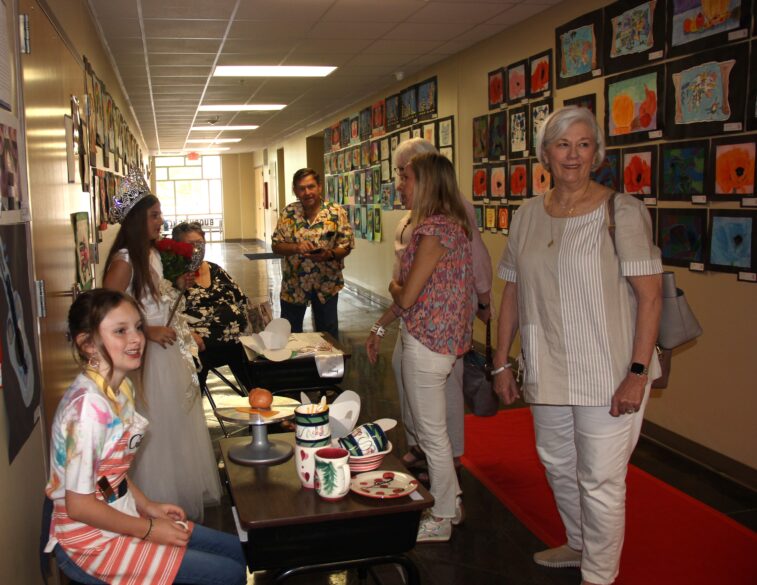
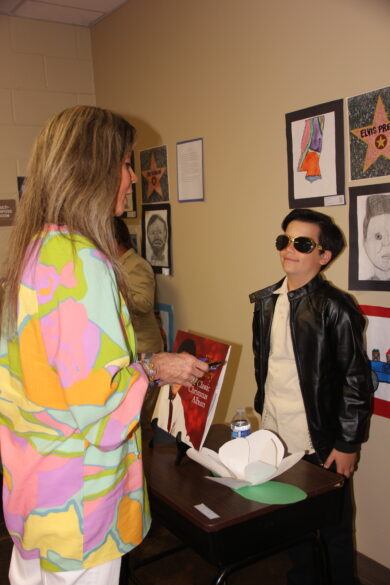
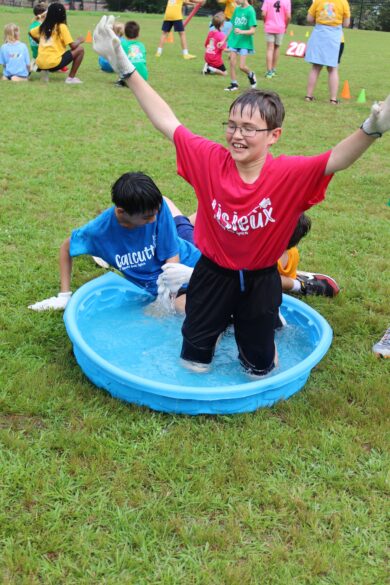




















May 27
Father Carlisle Beggerly
Catholic Community of Meridian
Father Charles Bucciantini, retired
May 29
Father Guy Blair, SCJ
Catholic Parishes of
Northwest Mississippi
Father Hilary
Brzezinski, OFM
St. Francis, Greenwood
Father Sam Messina, retired
May 31
Father Lincoln Dall
Holy Savior, Clinton
Vicar General
Father Rusty Vincent
St. Paul, Vicksburg
Father José de Jesus
Sanchez
St. Joseph, Greenville
Father Binh Chau Nguyen
Immaculate Conception, West Point
Father Nick Adam
Cathedral of St. Peter the Apostle, Jackson
Father Aaron Williams
Basilica of St. Mary &
Assumption of the Blessed Virgin Mary, Natchez
June 1
Father Anthony Okwum, SSJ
Holy Family, Natchez; St. Anne, Fayette & St. John the Baptist, Cranfield
June 2
Father Guy Wilson, ST
Holy Child Jesus, Canton & Sacred Heart, Camden
Thank you for answering the call!
FOR THE JOURNEY
By Effie Caldarola
One morning, I was half-listening to National Public Radio as I quickly prepared for an appointment. Into the shower, grab the coffee, find the toothbrush and in the midst of this, bits and pieces of the day’s news.
Then, “StoryCorps” was playing. An independent nonprofit, StoryCorps exists to let people tell their stories. According to their website, since 2003, they’ve helped “nearly 700,000 people across the country have meaningful conversations about their lives.” These stories are housed in the U.S. Library of Congress.
The people who tell their stories are ordinary people, if any child of God on this earthly pilgrimage qualifies as “ordinary.”

My ears perked up when I realized the family talking in the story was journeying through the terminal illness of the family’s husband and father, who we learned at the end had died shortly after the recording was made.
His wife remarked that people would tell her they were hoping for a miracle. She resisted this, because she said, “My whole life has been a miracle,” referencing her relationship with this man she loved.
That line captured my attention, and her comment infiltrated my whole day. I saw in her words the spirituality of gratitude.
Because true gratitude, a very deep well, is profoundly spiritual.
Sometimes in our contemporary culture, gratitude is portrayed as just another self-help scheme. You’ll be happier if you focus on thankfulness. At Thanksgiving, we enumerate our “thanks” at grace. We focus on family, success, “stuff.” Our consumer culture tempts us to glide over the richness and depth of real gratitude and to feel thankful for material things and the completion of our ambitions.
Years ago, I belonged to a Jesuit parish on a university campus. Our beloved young pastor, Jesuit Father Pat Malone, was quite ill. Because of treatments that had negatively affected his immune system, the day came when he could no longer celebrate Mass for us. I will never forget a Sunday morning, walking down the sidewalk to Mass, when we saw Father Malone, standing on the hill above us, alone outside the Jesuit residence, where he could wave good morning but keep a safe distance.
It wasn’t long before he died, but in my memory, he stands there still, a solitary figure wanting to be one with his flock. After his death, a compilation of his writings and homilies was published.
There was one line that I have carried with me ever since: “It is gratitude that ultimately asks one thing, but at a great price: fall extravagantly in love with what is given.”
Twenty-one words I’ve pondered. It is one thing to be thankful for a good test result, the pay raise, the healthy baby. It’s another to find gratitude in the hard things, the standing alone in illness and being able to appreciate the miracle therein.
What a great gift and challenge it is to fall extravagantly in love with that which is given.
Can I fall extravagantly in love with the absence of a loved one? Can I accept with gratitude the givenness of old age, of defeats, of loneliness, of the memory of sins for which I have expressed sorrow and contrition?
And what does it mean, “at a great price?” What is the coin of this realm of gratitude?
St. Ignatius of Loyola, founder of the Jesuits, told us we can find God in all things. That means God is there in sorrow and joy, in loneliness and togetherness. To live into that is itself a miracle. If God is there, we are called to be thankful for God’s presence, no matter how high the price.
(Effie Caldarola is a wife, mom and grandmother who received her master’s degree in pastoral studies from Seattle University.)
By Sister Constance Veit, lsp
During Pentecost weekend I participated in an historic event in New Haven, Connecticut. I was not there to take part in another protest at Yale University, or even to attend any of the graduation ceremonies taking place there. Instead, I joined hundreds of other Catholics for the launch of the National Eucharistic Pilgrimage.
This four-pronged pilgrimage, which began simultaneously in New Haven, San Francisco, Brownsville, Texas and the Mississippi Headwaters in northern Minnesota, will cover 6,500 miles over the next two months.
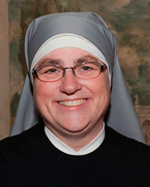
These four routes will converge in Indianapolis in time for the National Eucharistic Congress in mid-July. The eucharistic pilgrimage is the largest procession ever attempted in the Catholic Church – the most audacious event in Christianity’s 2,025-year history!
Although we encountered no signs of protest, I was thinking about the recent unrest in our country as we processed with the Blessed Sacrament through the Yale campus Saturday evening in light rain. I could not help thinking how different our procession was from the recent university protests.
After all, we were following Jesus, the Prince of Peace, the Good News incarnate, as he was carried in a monstrance by Father Roger Landry, the Catholic chaplain at Columbia University.
What a providential choice it was that Father Landry – so closely associated with “Ground Zero” of the protest movement – would be named as the only priest to walk an entire route of the pilgrimage!
Many other members of the clergy will participate in a portion of the trek, but Father Landry will himself carry the Blessed Sacrament along the entire eastern route of this historic journey.
In two talks over the weekend of May 18-19, Father Landry made several reflections that impacted my own eucharistic spirituality.
He spoke of Christian life itself as a eucharistic pilgrimage. We are pilgrims in a strange land he said, called to be always on the move.
This struck me in a particular way on Sunday morning as we processed through the streets of New Haven, a city just waking up to bistro brunches, dog walks and morning jogs. A few people seemed to pray with us as we passed them on the street, while others just stared with a look of curiosity.
We were walking in faith, bringing Christ out into the world, doing our part to reverse the indifference and contempt so rampant in our society.
We were trying to remind people that Jesus still lives among us and within us.
As we hastened along the streets of New Haven, I also recalled something Archbishop Christopher Coyne had said in his homily the evening before. A pilgrimage is “prayer embodied,” he suggested.
Each footstep lands both on an actual road and on the path of faith.
As Catholics I think our faith can be a bit “disembodied,” merely a private matter of the mind and heart. But this idea of prayer “embodied” became very real to me as my old legs began to tire during our fast-paced walk to the wharf in New Haven.
When we reached the dock, we saw two boats – a beautiful luxury yacht and a much smaller fishing trawler.
Jesus, who called his disciples to be fishers of men, could only have chosen the fishing boat, so we quickly boarded the humbler vessel, following Father Landry and the monstrance.
We Little Sisters felt privileged to be able to accompany the “Perpetual Pilgrims” and a few journalists on this leg of the pilgrimage.
During our two-hour boat ride on Long Island Sound, we fixed our gaze on the monstrance, prayed and sang with the Perpetual Pilgrims.
We were never in danger of sinking, nor did we try to walk on water, but we did try to imagine what it must have been like for Jesus and his disciples each time they set sail on the Sea of Galilee.
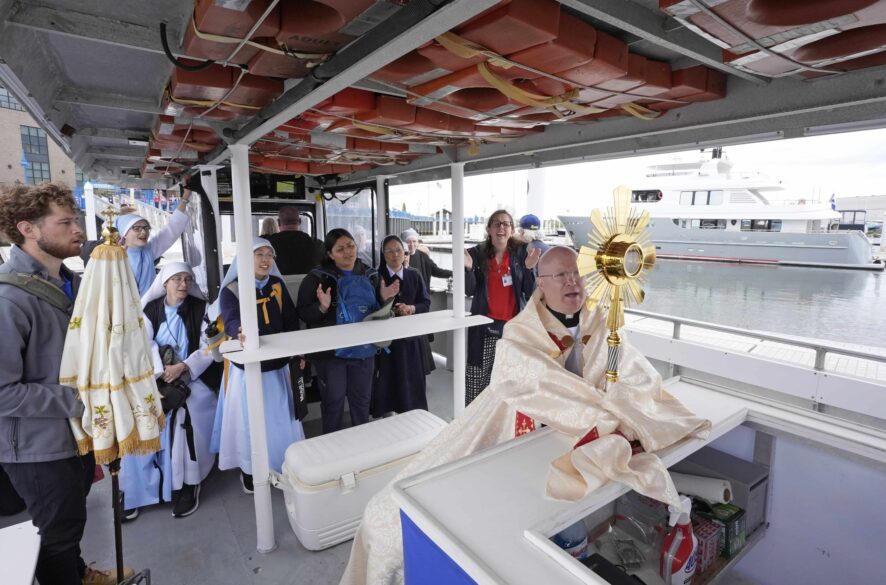
When we arrived in Bridgeport, Father Landry and the small band of Perpetual Pilgrims continued on, but our participation in the National Eucharistic Pilgrimage concluded.
We returned home, grateful for having been a part of history.
If you are going to be anywhere near one of the eucharistic pilgrimage routes this summer, don’t pass up the opportunity to participate in this historic experience.
May you come to know the joy of prayer embodied and may your faith in Jesus’ personal love for you be rekindled!
Sister Constance Veit is the communications director for the Little Sisters of the Poor in the United States and an occupational therapist.
By Justin McLellan
VATICAN CITY (CNS) – The Catholic Church’s synodal path, the church-wide listening and dialogue process currently approaching its second assembly in October, must become a model for all Catholic dioceses and parishes, Pope Francis said.
Opening the general assembly of the Italian bishops’ conference in the Vatican synod hall May 20, the pope spent an hour and a half answering questions posed to him by some 200 bishops on global issues, from migration to rising antisemitism, as well as problems within the church such as falling vocation rates and the merging of dioceses, according to reports by Italian Catholic media.
Bishop Antonio De Luca of Teggiano-Policastro in central Italy told Avvenire, the newspaper of the Italian bishops’ conference, that Pope Francis “asked us to encourage the synodal way so that it may become a paradigm in dioceses and parishes.”
During the closed-door meeting, the pope said pastors must approach the current era of change in society not with sadness but with a renewed energy since the Lord does not abandon his church, Avvenire reported.
The assembly’s primary focus was on the synodal path, particularly its upcoming “prophetic phase” in preparation for the general assembly of the Synod of Bishops in October.
Bishop Mario Toso of Faenza-Modigliana in northern Italy said the recent “ad limina” by Italian bishops offered Pope Francis material for reflection regarding the merging of dioceses, a consideration frequently brought up by the bishops in their meeting with the pope. “It is not necessarily the case that this should be the way forward in the future,” he said.
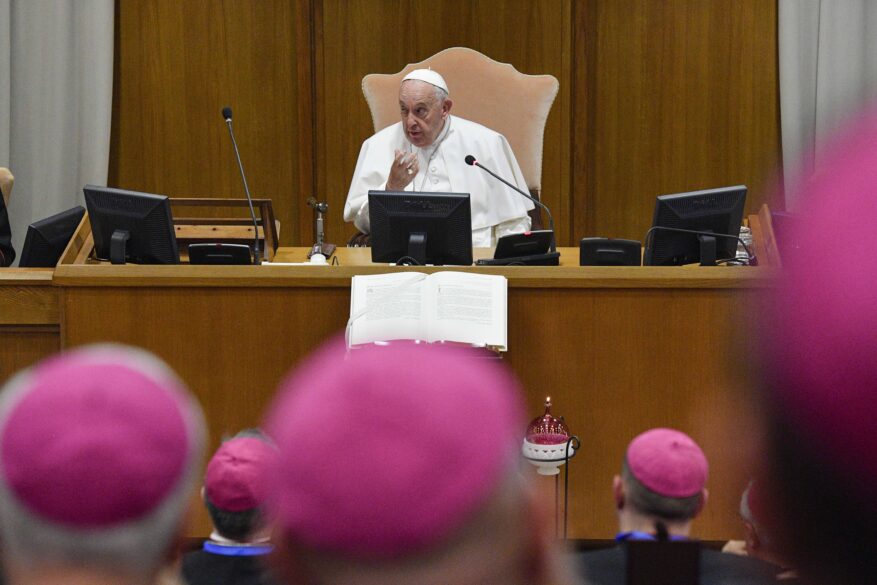
The pope also addressed the issue of seminary restructuring, advocating for regional or interdiocesan seminaries where the number of seminarians is too low to allow for individual diocesan seminaries and to ensure better formation and community life for future priests.
Vatican News reported that Pope Francis responded to bishops who asked about the lack of consecrated religious in their communities by highlighting the example of the church in Latin America, where religious sisters and laypeople are deeply engaged in organizing community life.
The bishops said declining vocations and aging clergy were also concerns raised during the meeting. Pope Francis encouraged them not to view these challenges catastrophically but to approach them with hope and creativity, highlighting the importance of supporting and accompanying priests who need encouragement and assistance in navigating contemporary cultural changes.
The pope gave each of the bishops a copy of his book, “Holy, not Worldly,” which collects his reflections on spiritual worldliness and the need for a humble and service-oriented church.
By Maria Wiering
(OSV News) – The Gulf Coast, Deep South and the Blue Ridge Mountains set the backdrop for the National Eucharistic Pilgrimage’s St. Juan Diego Route, which launches from the U.S.-Mexico border in Texas and goes through Louisiana, Mississippi, Alabama, Georgia, Tennessee, Kentucky and Indiana.
Beginning on Pentecost May 19, the Juan Diego Route is one of four National Pilgrimage Routes that will converge in Indianapolis ahead of the July 17-21 National Eucharistic Congress. The pilgrimage and the congress are part of the National Eucharistic Revival, a three-year initiative of the U.S. Conference of Catholic Bishops that launched in 2022.
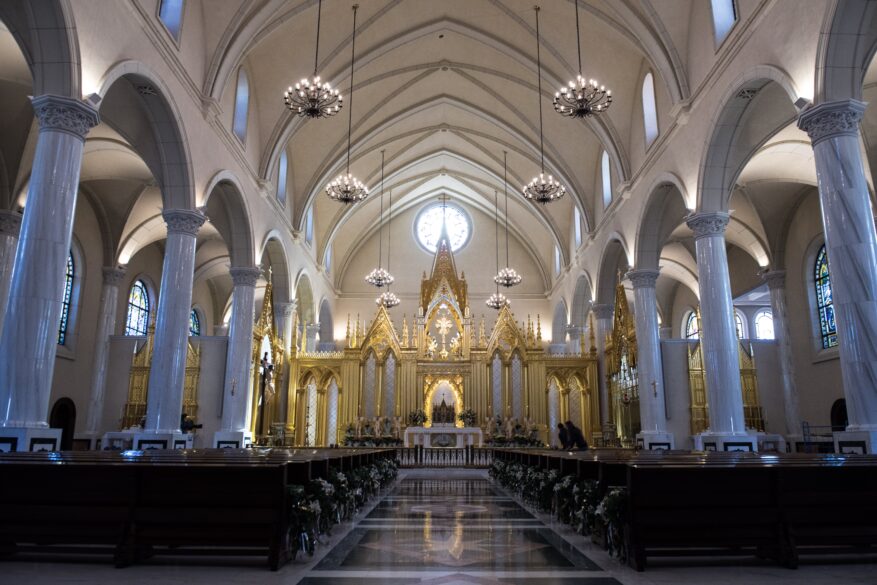
The 1,900-mile route will be traveled by six perpetual pilgrims accompanied by chaplains from the Franciscan Friars of the Renewal, who will carry the Eucharist in a monstrance. While Catholics may join the pilgrims for legs of their journey, they are especially encouraged to join the route’s public events, which include Masses, all-night adoration and confessions, processions, talks, blessings, service events, picnics and social gatherings.
The route itself is named for St. Juan Diego, whom Mary appeared to in 1531 near present-day Mexico City and famously filled his tilma with roses and an image of herself that is still visible today. The following is a list of selected highlights from the pilgrimage’s Southern route. Find information for the full Diego Route at https://tinyurl.com/JuanDiegoRoute.
– Our Lady of San Juan del Valle, San Juan, Texas: After launching May 19 from the Cathedral of the Immaculate Conception in Brownsville at a Mass celebrated by Bishop E. Daniel Flores of Brownsville. the pilgrimage journeys from that U.S.-Mexico border city westward to San Juan and its national shrine, the Basilica of Our Lady of San Juan del Valle, for Mass May 22. The shrine honors Our Lady of San Juan, a devotion to Mary that emerged in the 1600s in San Juan de los Lagos, Mexico, after a miraculous healing associated with an image of Mary.
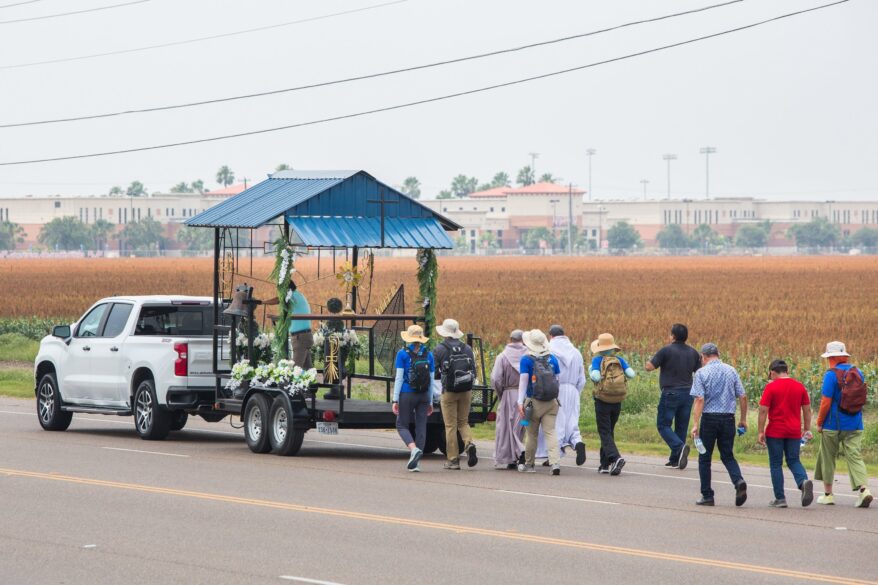
– Corpus Christi Cathedral, Corpus Christi, Texas: The pilgrimage continues along Texas’ Gulf Coast, reaching Corpus Christi Cathedral May 26, for Mass and a mile-long procession. According to legend, the city was named for the “body of Christ” in 1519 when a Spanish explorer discovered its lush bay on the feast of Corpus Christi. From there, the pilgrims will continue through the Diocese of Victoria and Archdiocese of Galveston-Houston.
– Blessed Carlo Acutis Chapel, Beaumont, Texas: On June 2, the pilgrims stop at Christ Central Camp and its Blessed Carlo Acutis Chapel in the Diocese of Beaumont for talks, testimony and Eucharistic adoration with Bishop David L. Toups of Beaumont. Blessed Carlo, the namesake for the diocesan summer camp’s chapel, died in 2006 at age 15. He was known for his deep love of the Eucharist, and the U.S. bishops named the teenager an intercessor for the National Eucharistic Revival.
– St. Louis Cathedral, New Orleans: The pilgrims continue east into Louisiana and through the dioceses of Lake Charles, Lafayette, Houma-Thibodaux and Baton Rouge, into the Archdiocese of New Orleans. They stop June 9 at the Cathedral-Basilica of St. Louis King of France for Mass with Archbishop Gregory M. Aymond and a procession in New Orleans’ French Quarter. Catholics have worshipped on the cathedral site since 1727, with the current church erected in 1794 and reconstructed in the mid-1800s. The cathedral’s namesake, St. Louis IX of France, was known to have ordered his day around Mass and prayer.
– Shrine of the Most Blessed Sacrament, Alabama: The pilgrimage continues through the Diocese of Biloxi, Mississippi, where pilgrims will attend a blessing of the sea in Long Beach June 12. Passing through Alabama’s Archdiocese of Mobile into the Diocese of Birmingham, the pilgrims will spend June 20 at the Shrine of the Most Blessed Sacrament in Hanceville, Alabama, with Mass, confession, talks, a shrine tour, prayer with sisters from Our Lady of the Angels Monastery and a Eucharistic procession from the grotto to the main church. Under the leadership of Mother Angelica, founder of the Eternal Word Television Network, and her sisters, the Shrine of the Most Blessed Sacrament and adjacent monastery were completed in 1999. The shrine chapel contains an 8-foot-tall monastrance for perpetual adoration.
– Abbey of Gethsemani, Trappist, Kentucky. The pilgrimage continues through the Archdiocese of Atlanta and the dioceses of Knoxville, Nashville and Owensboro, Tennessee, before entering the Archdiocese of Louisville. On July 4, the pilgrims will process to the Abbey of Gethsemani, for prayer, Mass and lunch. Founded by Trappist monks from France in 1848, the monastery was also home to American monk, mystic and writer Thomas Merton. Trappist monks – formally called Cistercians of the Strict Observance – are contemplative monks who follow the Rule of St. Benedict and generally maintain silence throughout their day. After leaving the abbey, the pilgrims continue into the Archdiocese of Indianapolis, Indiana, converging with pilgrims with the other three routes ahead of the National Eucharistic Congress.
(Maria Wiering is senior writer for OSV News.)
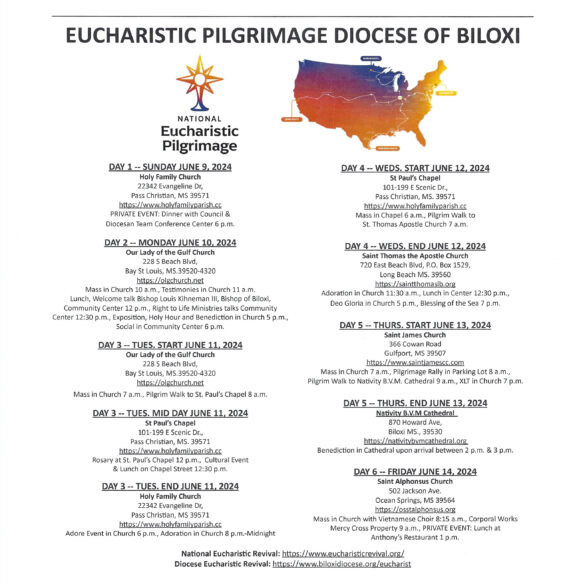
NATION
INDIANAPOLIS (OSV News) – A special track just for priests has been added to the schedule of the National Eucharistic Congress in Indianapolis July 17-21, with speakers including two bishops and prominent theologians. The 90-minute “impact session” titled “Abide: The Priest Experience” will be offered on days two, three and four of the five-day congress. Day Two features speakers theologian Scott Hahn, founder and president of the St. Paul Center, and Father Brian Welter, executive director of the Institute for Priestly Formation in Omaha, Nebraska. Day Three features Bishop Andrew H. Cozzens of Crookston, Minnesota, chairman of the board of the National Eucharistic Congress Inc.; Dan Cellucci, CEO of Catholic Leadership Institute; Tim Glemkowski, CEO of National Eucharistic Congress Inc.; Jason Simon, president of The Evangelical Catholic; and Jonathan Reyes, senior vice president of strategic partnerships and senior advisor for the Knights of Columbus. Cellucci returns on Day Four, along with Bishop Daniel E. Flores of Brownsville, Texas. Meanwhile, the congress will also include a luncheon series for permanent deacons featuring Deacon Dominic Cerrato, Deacon James Keating, Deacon Omar Gutiérrez and Deacon Joseph Michalak. The congress is the pinnacle of the National Eucharistic Revival, a three-year initiative of the U.S. bishops to deepen understanding and love for Jesus in the Eucharist.
ABBEVILLE, Louisiana (OSV News) – A first Communion Mass at St. Mary Magdalen Catholic Church in Abbeville, Louisiana, was disrupted May 11 after a teenager attempted to enter the church with a rifle. Parishioners prevented the young man from entering the parish where 60 children were preparing to receive their first Communion. Police took the suspect into custody, and moments of chaos were caught on the church’s live stream as they swept the premises to see if other threats were present. Bishop J. Douglas Deshotel of Lafayette commented on the incident, saying, “we are thankful to God that a tragedy was avoided at the First Communion Mass for the children of St. Mary Magdalen in Abbeville. The quick response of the Abbeville Police Department and alert parishioners is a great example of caring for the most vulnerable in our community. Let us pray for an end to all threats of violence to innocent human life.”
VATICAN
VATICAN CITY (CNS) – Pilgrims passing through the Holy Door of St. Peter’s Basilica during the Holy Year 2025, going to confession, receiving Communion and praying for the intentions of the pope can receive an indulgence, but so can inmates in prison and those who work to defend human life or assist migrants and refugees. Fasting “at least for one day of the week from futile distractions” such as social media also can be a path toward a jubilee indulgence, according to norms published by the Vatican May 13. Pope Francis said he will open the Holy Year at the Vatican Dec. 24 this year and close it Jan. 6, 2026, the feast of Epiphany. But he also asked bishops around the world to celebrate the Jubilee in their dioceses from Dec. 29 this year to Dec. 28, 2025. The norms for receiving an indulgence during the Holy Year were signed by Cardinal Angelo De Donatis, the new head of the Apostolic Penitentiary, a Vatican court dealing with matters of conscience and with the granting of indulgences. The basic conditions, he wrote, are that a person is “moved by a spirit of charity,” is “purified through the sacrament of penance and refreshed by Holy Communion” and prays for the pope. Along with a pilgrimage, a work of mercy or an act of penance, a Catholic “will be able to obtain from the treasury of the Church a plenary indulgence, with remission and forgiveness of all their sins, which can be applied in suffrage to the souls in Purgatory.”
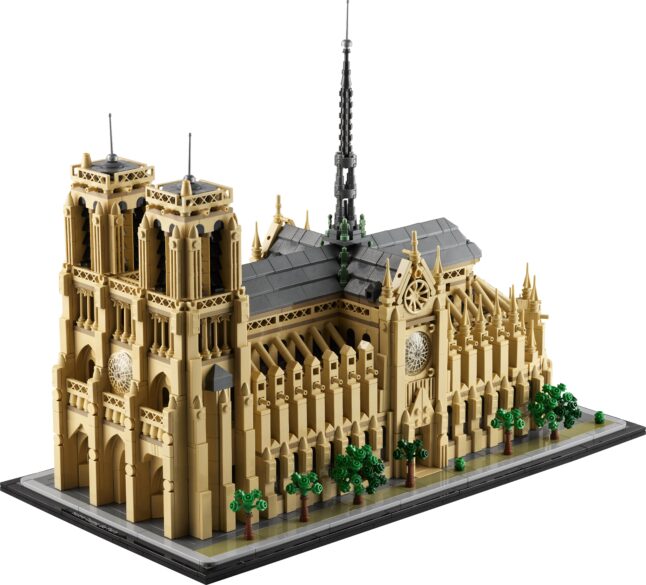
WORLD
BILLUND, Denmark (OSV News) – As workers complete the rebuilding of Notre Dame Cathedral in Paris after a devastating April 2019 fire, LEGO fans can assemble their own model of the iconic medieval structure, thanks to a soon-to-be-released kit from the Danish toy manufacturer. On May 7, the LEGO group announced it is accepting pre-orders for LEGO Architecture Notre-Dame de Paris, which will be released June 1. The company also will issue a LEGO Art Mona Lisa kit Oct. 1, with both products forming a tribute to Paris’ best-known artistic treasures, according to LEGO. The Notre Dame model – which retails for $229.99 – consists of 4,383 pieces and measures 13 inches high and 8.5 inches wide, with a depth of 16 inches. “We wanted LEGO fans to retrace the architectural journey and evolution of this landmark during its construction, to encourage a deeper appreciation for its real-life counterpart,” said LEGO senior designer Rok Žgalin Kobe.
PARIS (OSV News) – Called a “consoling angel,” the sister of King Louis XVI decided to stay on the side of her family even when death was imminent for doing so in the midst of horrors of the French Revolution. On the 230th anniversary of her death under the guillotine on May 10, 1794, “Madame Elisabeth” is one step closer to beatification as the historical commission for her sainthood cause wrapped up its work May 2. The diocesan phase of her sainthood cause was reopened in 2017. Since then Father Xavier Snoëk, the postulator, has spared no effort to raise awareness of the noble lady. Father Snoëk called her “an original and very modern young woman … pious and exuberant at the same time.” Elisabeth never married and chose “a life of commitment to the service of others, rooted in faith.” She was 25 when the French Revolution broke out full scale in 1789. She could have gone into exile, but she decided to stay with her brother Louis XVI. In August 1792, the whole royal family was imprisoned in the notorious Le Temple prison. Elisabeth “put all her energy into trying to support family members,” Father Scnoëk said, explaining why she was called a “consoling angel.” “She recited a daily prayer of abandonment to God, and at the moment of her death on the guillotine,” he added.
TBILISI, Georgia (OSV News) – A Catholic aid worker in the nation of Georgia told OSV News that a proposed law targeting nongovernmental organizations and media would severely undermine care for children and the poor in that country. “I cannot imagine how (we will) advocate for the rights of the children, the rights of the people,” said Tamar Sharashidze, children and youth protection and development program manager for Caritas Georgia. The agency – part of Caritas Internationalis, the universal Catholic Church’s global federation of more than 160 humanitarian organizations – is a locally registered NGO that serves as the country’s largest social service provider. But that reach is now threatened by a renewed push to enact Georgia’s proposed “Transparency of Foreign Influence” legislation. The Russian-style law would label as “foreign agents” entities receiving more than 20% of their funds from outside donors, threatening both Caritas Georgia’s mission and the country’s hopes to become a member of the European Union. Sharashidze is one of thousands regularly protesting the bill, donning a mask and glasses to evade being tear-gassed by police. “This proposed law would limit the capacity of civil society and media organizations to operate freely, and it could limit freedom of expression and unfairly stigmatize organizations that deliver benefits to citizens of Georgia,” she said. “And the voice of the people is more and more loud. And we have hope that we will win.”
BILOXI – Father Patrick “Pat” O’Shaughnessy, age 80, of Hattiesburg, and a former resident of Long Beach, passed away peacefully on April 19, 2024.
Father Pat was born on Feb. 11, 1944 in Limerick, Ireland. He was a naturally gifted athlete. In his youth he played rugby. He then went on to compete in many marathons and his greatest achievement was completing an IronMan Triathlon in Hawaii on Oct. 14, 1989, with a time of 12 hours, 53 minutes and 11 seconds. He loved all sports but had a deep passion for golf. He got a hole in one in Ballybunion.
Father Pat ministered in many different areas across Mississippi. Since his retirement, he was glad to be a part of Saint Thomas the Apostle Catholic Church in Long Beach.
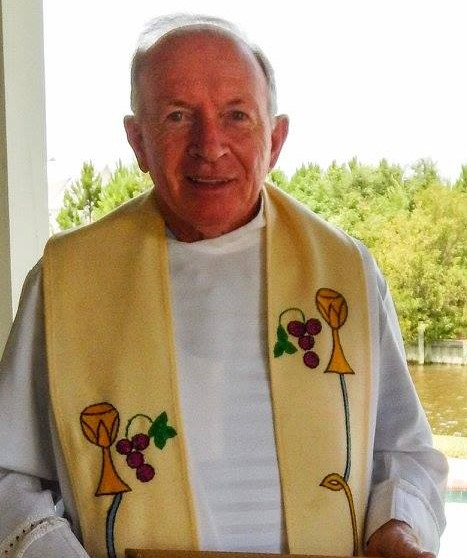
He was preceded in death by his parents, Patrick and Margaret O’Shaughnessy; his brother, Jim O’Shaughnessy; his sister-in-law, Emma O’Shaughnessy; and an infant sister.
He is survived by numerous cousins in Ireland.
He will be mourned by Bishop Kihneman, all the Priests in Mississippi, many other Priests, and his previous parishioners who will miss him dearly and many other friends both in the United States and Ireland.
Father Pat was a native of Limerick, Ireland and completed his ecclesiastical studies at St. Patrick’s College, Thurles, County Tipperary. He was ordained to priestly ministry on June 8, 1968 at the Cathedral of the Assumption in Thurles and arrived in the Diocese of Natchez-Jackson on Aug. 27, 1968.
His first assignment was as an associate pastor of Sacred Heart Parish in Pascagoula, associate pastor of St. Michael Parish, Vicksburg, and St. John Parish in Oxford while he was continuing his graduate studies at the University of Mississippi, and then he was assigned to St. Alphonsus Parish in Ocean Springs.
He served as pastor of St. Michael Parish, Biloxi, Sacred Heart Parish, Hattiesburg, St. Thomas Aquinas, Hattiesburg, Our Lady of Perpetual Help Parish, Lumberton and St. Joseph Mission, Poplarville, and he retired to St. Thomas the Apostle Parish in Long Beach in 2009.
Father Pat was a gifted homilist that could get his point across in just a few words. His love for the outdoors was evident with his love of golf and bicycling. Father Pat also had a gift with children and caring for those with needs. He worked with the St. Vincent de Paul Society offering spiritual guidance to those in need. His impact on the Diocese of Biloxi will be remembered and celebrated for many years to come.
A Mass of Christian Burial was celebrated on Monday, April 29, 2024, at St. Fabian Catholic Church in Hattiesburg. A second Mass of Christian Burial was celebrated in Father Pat’s homeland in Ireland on Friday, May 3, 2024. He is interred in Loughill Graveyard, Newcastle, County Limerick, Ireland.
By Justin McLellan
VATICAN CITY (CNS) – The troves of knowledge stored in archives and libraries must be made available and accessible to all people, especially as they increasingly depend on technological means for their knowledge, Pope Francis said.
Scholars overseeing archives and managing libraries must have “a great openness to discussion and dialogue,” Pope Francis told professors and students from the Vatican’s archival and library sciences schools May 13. He encouraged them to develop “a readiness to welcome,” especially the marginalized and those suffering “material, cultural and spiritual poverties.”
The pope encouraged the members of the two schools – the Vatican School of Paleography, Diplomatic and Archival Studies and the Vatican School of Library Studies – to avoid becoming complacent in distributing knowledge, particularly given the “decisive and epochal cultural challenges” of modern day, noting the problems of contemporary scholarship “related to globalization, to the risk of a flattening and devaluation of knowledge.”
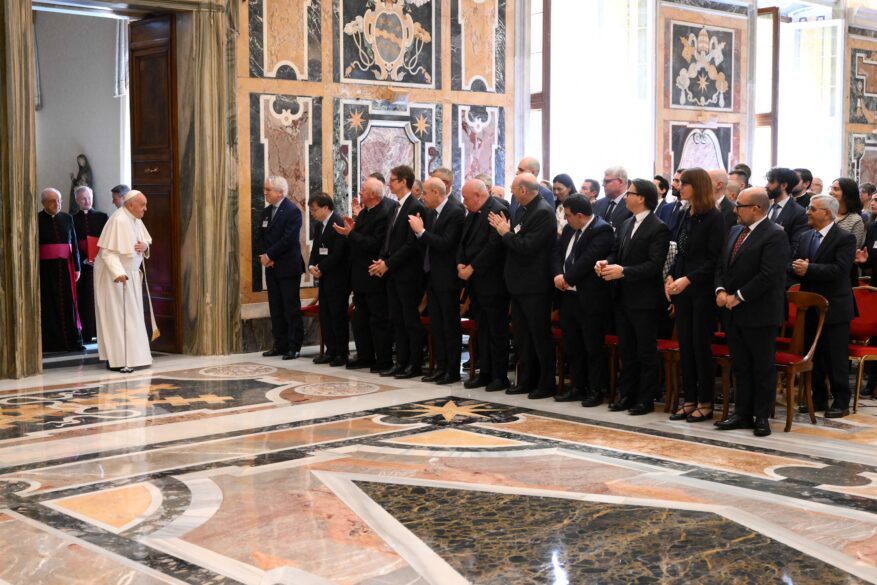
He highlighted humanity’s “increasing complex relationship with technology,” the challenges of engaging with and studying traditional cultures, making sources of information accessible to all and the responsibility of scholars to “defend all from the toxic, unhealthy and violent things that can lurk in the world of social media and technological knowledge.”
Pope Francis also urged the scholars to avoid “self-referentiality” and to share their ideas and experiences with other academic institutions.
Marking the 140th anniversary of the archival school and the 90th anniversary of the school of library sciences, the pope said that such anniversaries are not meant “just to honor old glories” but to “look forward to the future, to have the courage to rethink yourselves in the face of demands from the cultural and professional world.”
The pope praised the “decisive characteristic” of the two schools: their “eminently practical” and “concrete” approach to problems and studies, which he said enables them to come into contact with past knowledge and transmit it to future generations.
“Confronting the realty of things is worth more than ideology,” he said. “Ideologies always kill.”
By John Mulderig
NEW YORK (OSV News) – A blending of historical facts and Southern gothic fiction proves unstable in the biographical and literary drama “Wildcat” (Oscilloscope). As a result, director and co-writer Ethan Hawke achieves only mixed results as he seeks to introduce viewers to the life and works of Catholic author Flannery O’Connor.
Given the high rank she enjoys among 20th-century American writers, especially on the basis of her masterful short stories, O’Connor’s career is certainly deserving of attention. Nor does the primary fault for the unsatisfying nature of “Wildcat” lie with Hawke’s daughter Maya’s portrayal of the scribe, whose intriguing persona the actress succeeds in capturing.
Instead the original aesthetic sin detectable here is one of strategy. In crafting their screenplay, the elder Hawke and his script collaborator Shelby Gaines ill-advisedly attempt to interweave scenes from O’Connor’s real experiences with dramatizations of the tales she penned. The reality-based elements mostly work, the fictitious ones, by contrast, fall flat.
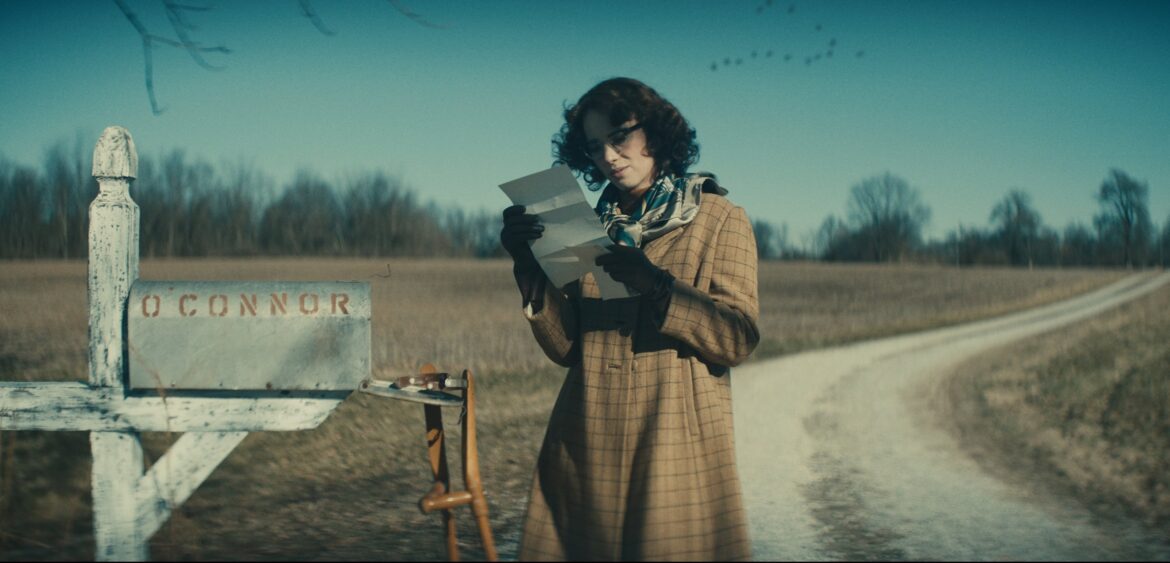
Thus audiences will likely be engaged by the movie’s recounting of O’Connor’s struggle to publish her first novel as well as the narrative of her battle with lupus, the disease to which she would succumb in 1964, aged only 39. The illness made O’Connor dependent on her mother, Regina (Laura Linney), with whom she enjoyed a close yet conflicted relationship.
Like many others, Regina seems to have been somewhat bewildered by her daughter’s vibrant but eccentric creative vision. A studious reader of both scripture and the “Summa Theologica” of St. Thomas Aquinas, O’Connor was at once fascinated and repelled by the do-it-yourself approach to Christianity she observed in the then-overwhelmingly Protestant South.
Drawing on O’Connor’s “A Prayer Journal,” published in 2013, Hawke manages to convey the seriousness with which she regarded her heartfelt beliefs. In fact, one of the picture’s most compelling exchanges takes place between a gravely ailing O’Connor and local clergyman Father Flynn (Liam Neeson).
Sequences adapted from O’Connor’s writings, on the other hand, are generally ineffectual. In some cases, this is because they are too heavily narrated, leaving them stranded between page and screen.
Still, for all its flaws, “Wildcat” does have some educational value, especially for those unfamiliar with O’Connor’s spiritual striving, physical suffering and impressive legacy. Given that problematic elements are relatively few, moreover, it’s possibly an acceptable choice for mature adolescents.
The film contains scenes of sensuality, several uses of profanity and a few milder oaths. The OSV News classification is A-III – adults. Not rated by the Motion Picture Association.